Hand-Loomed Rugs
Hand-loomed rugs are quickly taking over the rug market. This isn’t due to consumer demand for a hot, new look as most are made to look like other types of rugs. It’s because hand-loomed rugs are quick to make and therefore cheaper to manufacture. The reason we point this out is that the lower cost is often not passed along to the consumer and loomed rugs are often misrepresented as the more expensive rug type they mimic.
Why Do They Cost Less?
- A hand-knotted rug of moderate size (about 5’ x 8’) will take between 6 and 12 months to finish.
- A hand-tufted rug of the same size will take three to five weeks to finish.
- A hand-loomed rug will take one to three days to finish.
Why Does It Matter How The Rug Is Made?
- A below average quality hand-knotted rug will have a useful life of around 20 years in normal use.
- High quality hand-knotted rugs are still in use after 100 years.
- A typical hand-tufted rug will last 5 to 7 years, and top quality custom-made, hand tufted rugs will last 30 years or more.
- A typical hand-loomed rug will last 2 to 5 years.
Variations in rug finishing and the face fiber chosen will change these longevity averages. A hand loomed rug well-finished with better adhesives will last longer. Any rug with a plant fiber derived face yarn will typically be at the lower end of each lifespan scale.
Here are some general observations after seeing thousands of different types of hand-loomed rugs:
- They can be structurally weak, depending on how they’re finished. Some that look durable can be torn in half by hand, and some will literally separate with use.
- Since the manufacture of hand-loomed rugs is quick and inexpensive, rug designers feel free to do a lot of experimentation with rayon, hemp, linen and other fibers that aren’t appropriate for typical rug traffic.
- It can be difficult to identify the manufacturing method, as the loomed rug makers try to closely emulate other hand-knotted and hand-tufted rug types.
How Hand-Loomed Rugs Are Made
A contemporary hand-loomed rug originates from an ancient method of weaving, given a new twist to create different looks. Traditionally, all rugs woven on a hand loom were considered flat weaves. They looked the same on both sides and had no pile (the fuzzy, top side of most rugs) and were basically a heavy piece of cloth.
The new twist is inserting rods across the width of a loom while weaving. This serves to pull part of the fiber into a loop above the rest of the rug, giving it pile. The rod can then be pulled out or sliced out of the loops as weaving continues. Hand Loom & Weaving Process Video
This process doesn’t provide for much tension or friction between fibers, so the textile at this stage can be easily pulled apart. Early versions of these rugs had a tendency to split under the movement of chair legs, as the loose fibers moved like tennis racket strings. More current hand-loomed rugs are either woven much more tightly or have an adhesive applied to help keep the weave in place and provide more dimensional stability.
What To Look For
Hand-loomed rugs typically emulate three other types of rugs: hand-knotted, hand-tufted, and the highest quality machine tufted rugs.
The one thing most hand-loomed rugs have in common is a lightweight fiber that runs the length of the rug below the pile…so investigation starts by bending the carpet sharply to open up the pile. This is called “grinning” the rug.
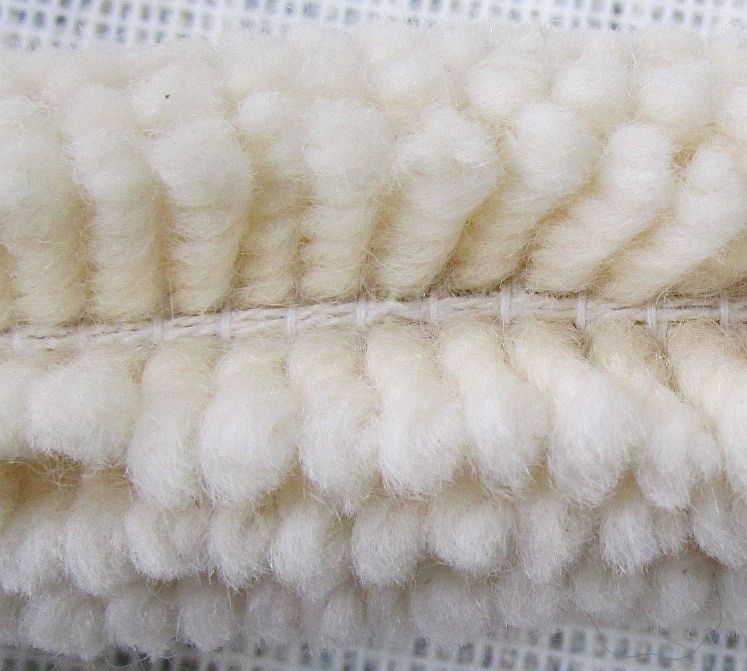
This example shows the cross fibers of the looming process at the base of the pile. Manufacturers are starting to find ways to hide this fiber, so grinning is not always a reliable identifier.
The “Hand-Knotted” Look
Hand-knotted rugs are made by tying yarn around the rug’s foundation fiber. From the back, a hand-knotted rug will have indentations or rows that travel from one end of the rug to the other. The loomed rug may have a colored fiber to distract your eye, but the row on the back will go side to side.

Hand-knotted rugs usually don’t show the foundation at the back of the pile; loomed rugs break open easily.
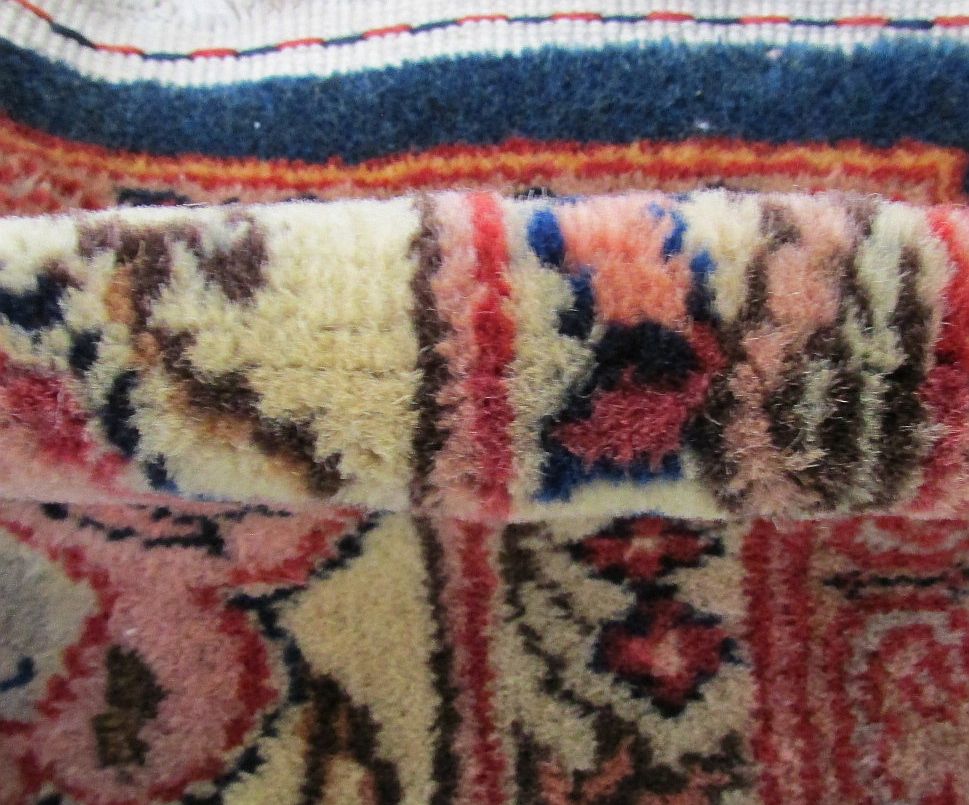
Often the loomed rugs, emulating knotted rugs, will have a very light application of spray-on hot glue on the back. This seems to work fairly well to keep the rug together.
The “Hand-Tufted” Look
Hand-tufted rugs are made by pushing yarns through a cotton fabric and using latex glue to hold the tufts in place. A second canvas backing is applied to give the rug more body. The lifespan of these rugs is determined by the quality of adhesive used.
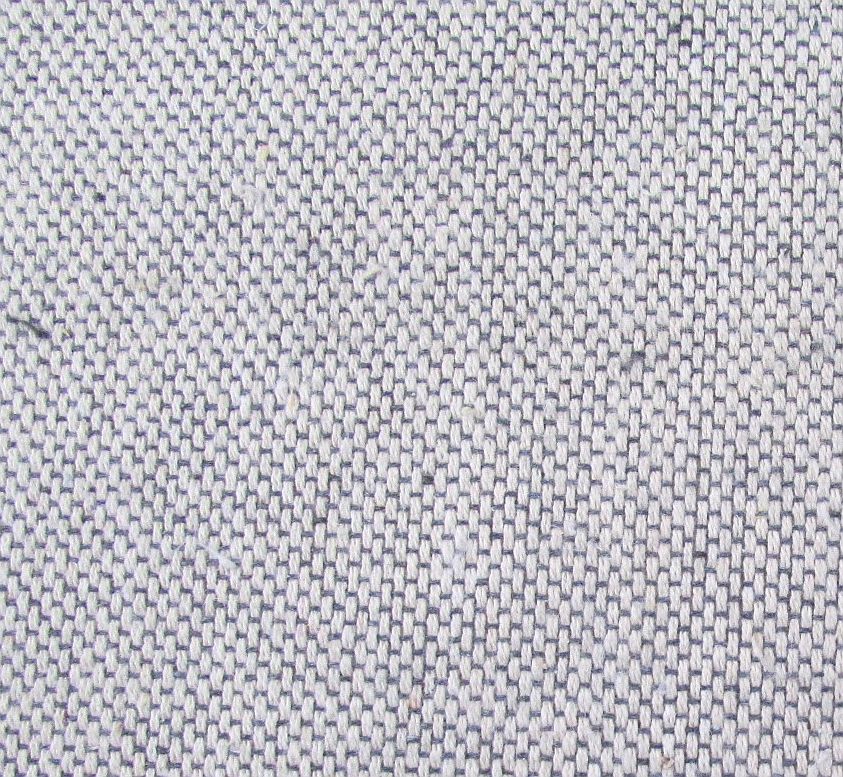
The two backings, one cotton, one canvas, look the same from the back.
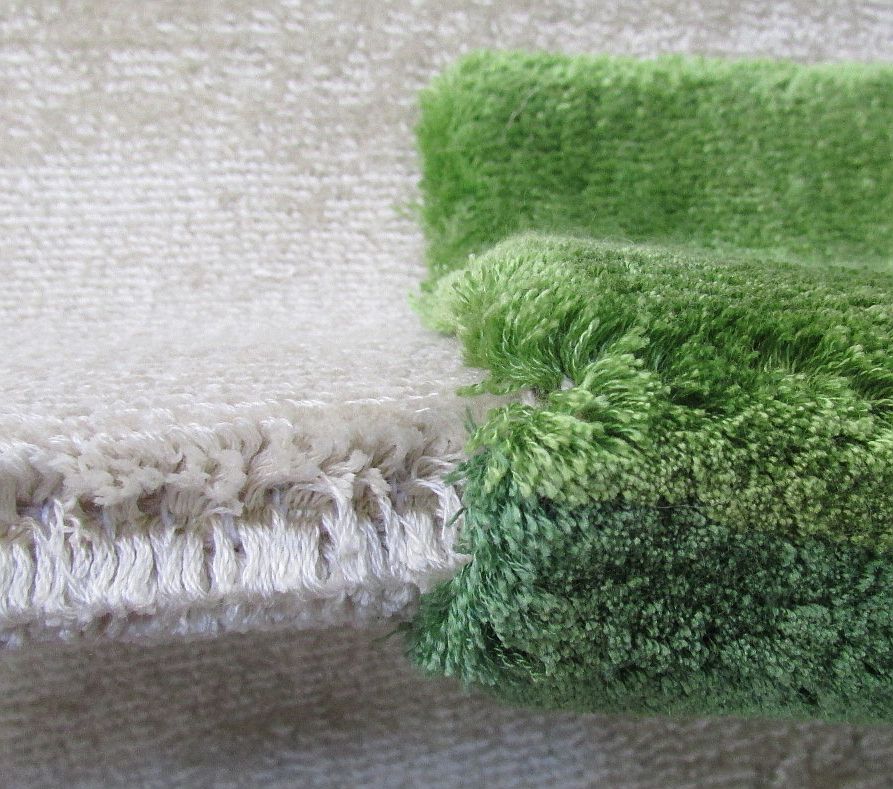
“Grinned” loomed rug (left) and tufted rug (right)
The loomed copy also has latex applied and a cotton backing applied. Sometimes this works well, sometimes the latex isn’t worked in enough to secure the higher rows of the weave resulting in rows of rug tufts falling out.
The High-Quality “Machine Tufted” Look
The more expensive machine-made carpet will usually have a densely packed pile with a high quality latex adhesive to hold the rug tufts in place. The US made carpet will have a synthetic mesh that can be seen from the back.
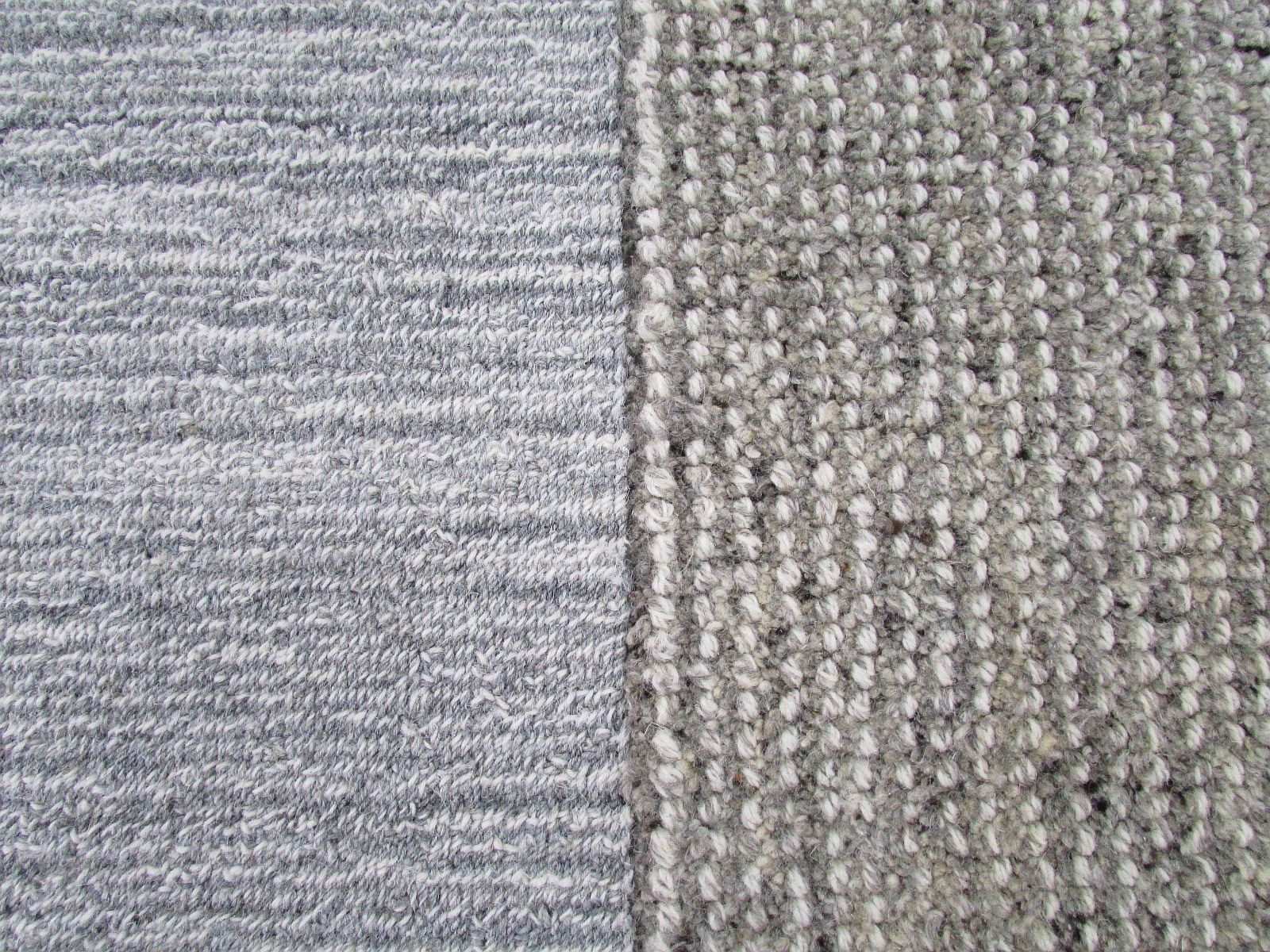
Face

Back
These have been the most problematic of the loomed rugs due to the poor quality of latex used and inaccuracy in listing the fiber content. One high-end brand sells a 50/50 wool/rayon blend labeled as all wool. We’ve seen this type of loomed rug fail in as little as a year of use.
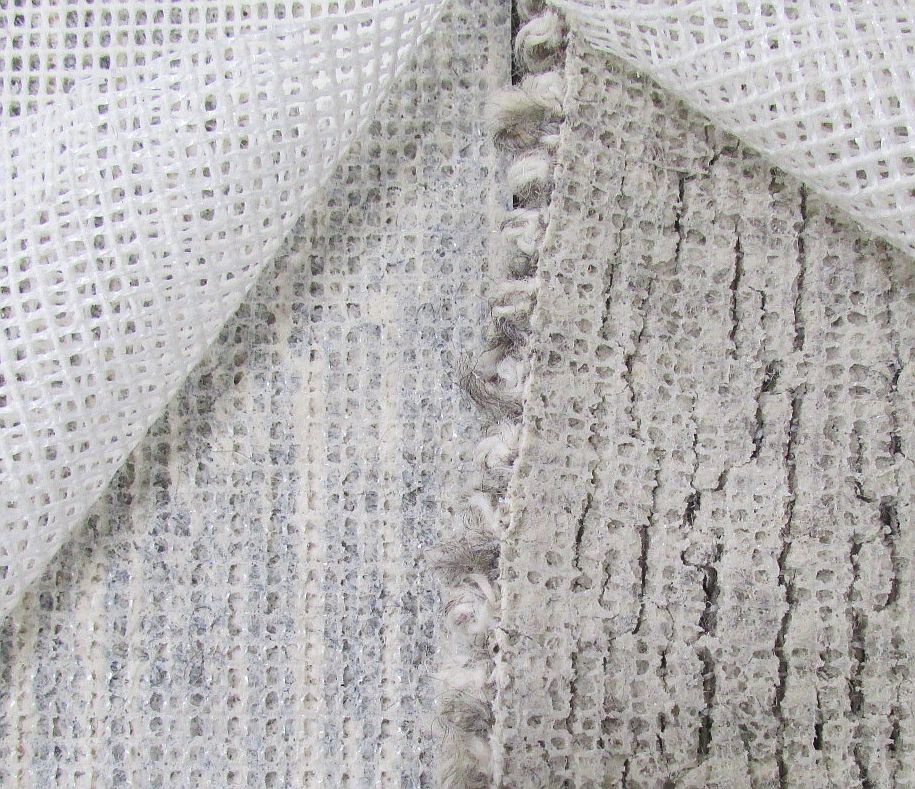
Poor latex
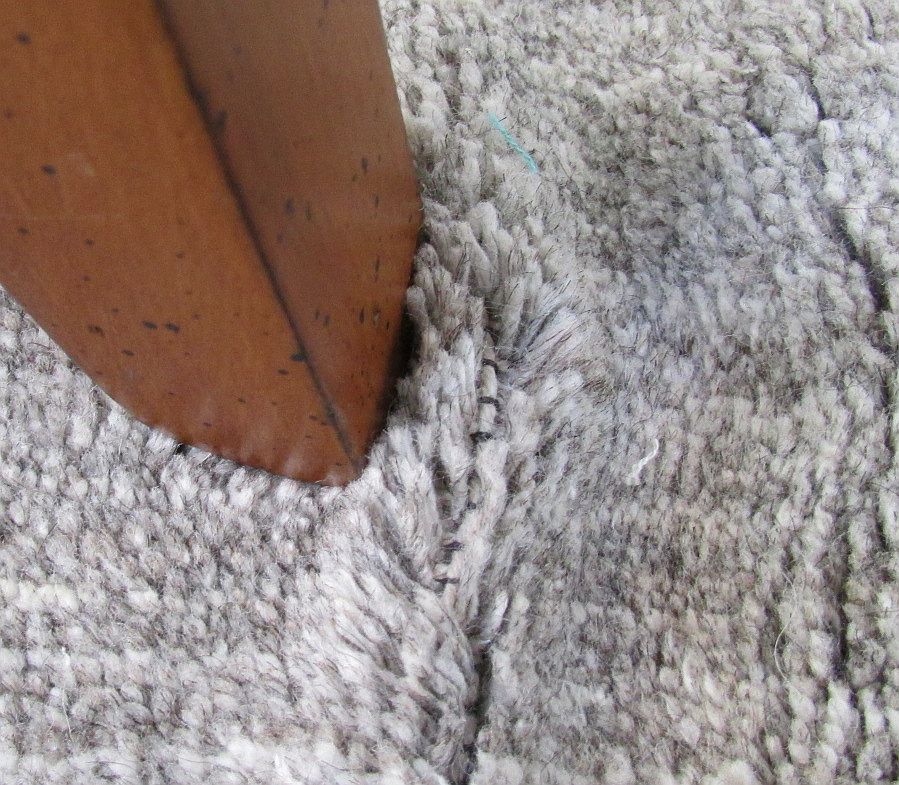
Chair damage to rug
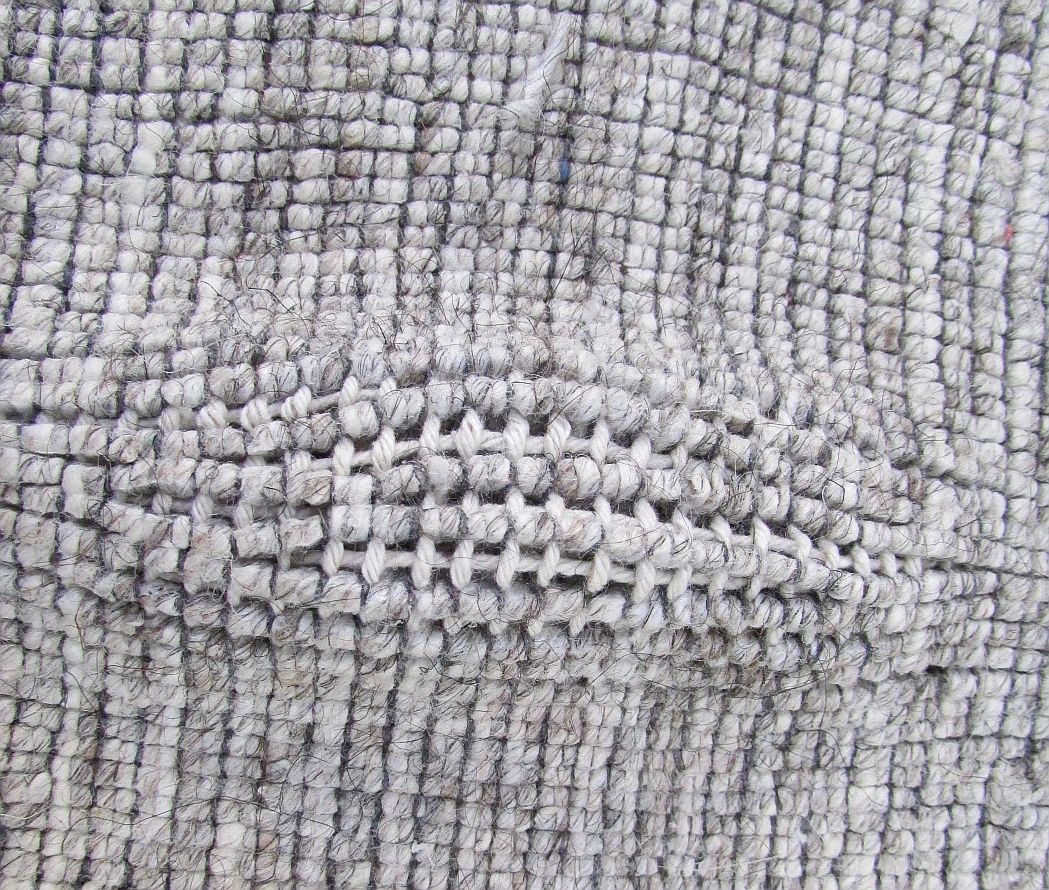
Back of rug showing chair damage
It is difficult to tell the difference between the machine-tufted and the loomed copy. The same synthetic mesh is used on the back, and if the “grinning” technique doesn’t work, you’ll have to ask – and trust – the retailer.
This article is not intended to disparage hand-loomed rugs as a design choice. If you are aware of what you’re buying, a loomed rug can provide the desired look and serve the purpose well, and at an attractive price point. If you like to keep your décor on the cutting edge of interior design, a rug with greater longevity may not be a high priority.
Let us know if you have questions! To inquire about our cleaning and rug repair services, or request a service proposal, contact us today.
